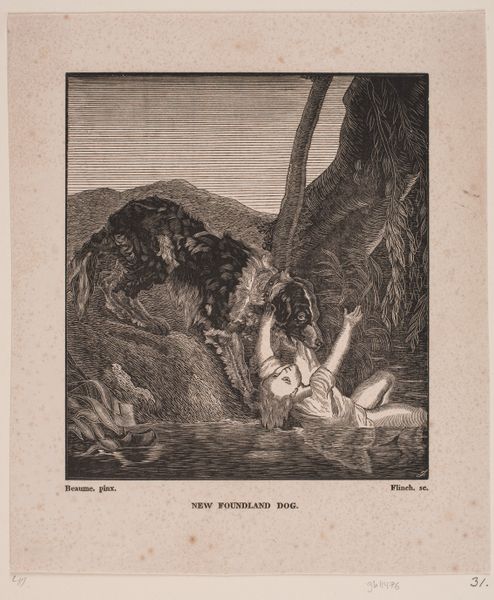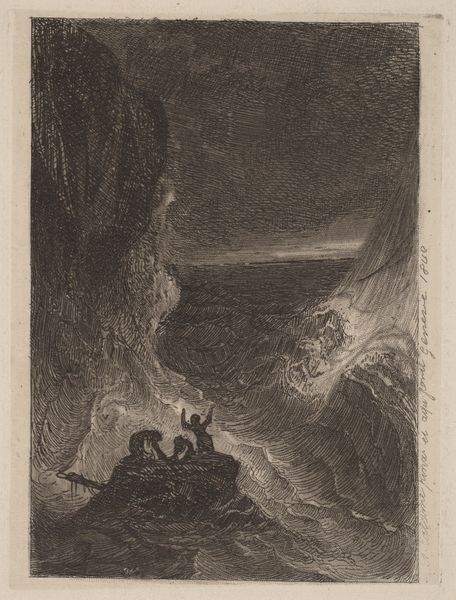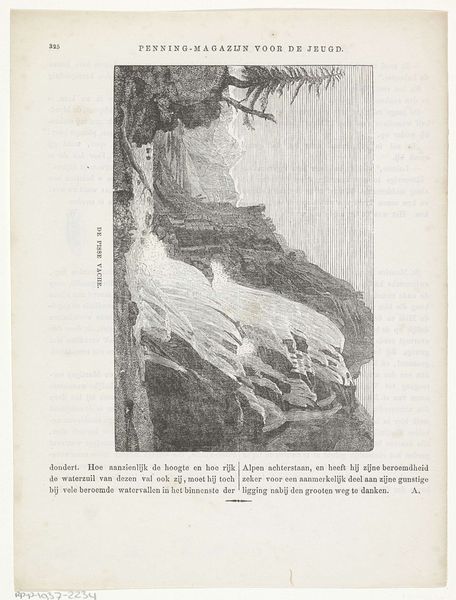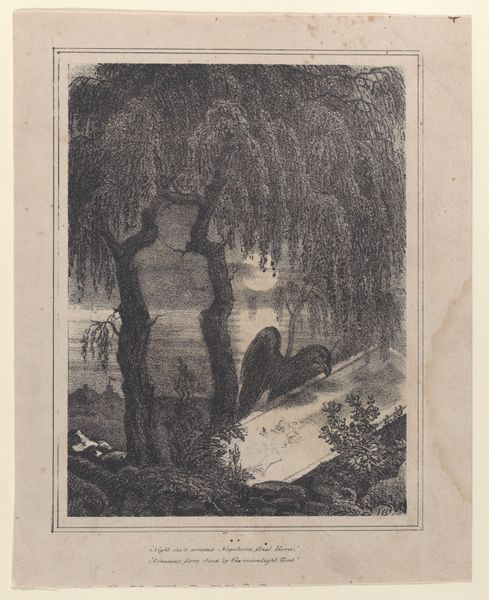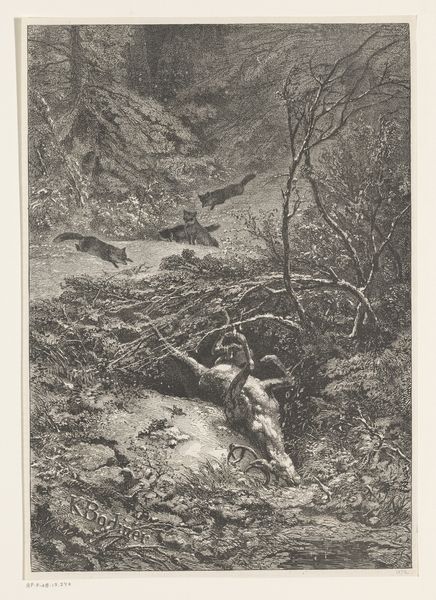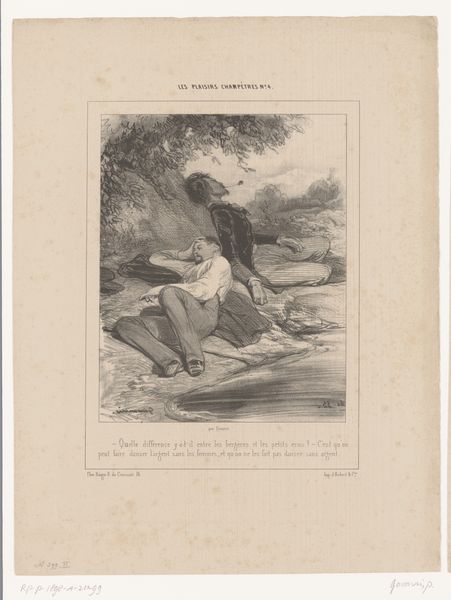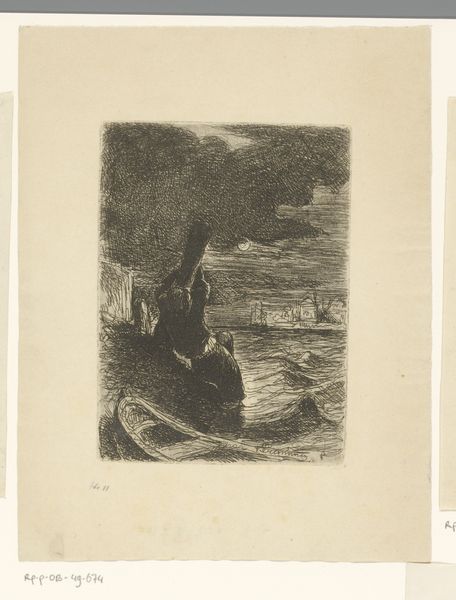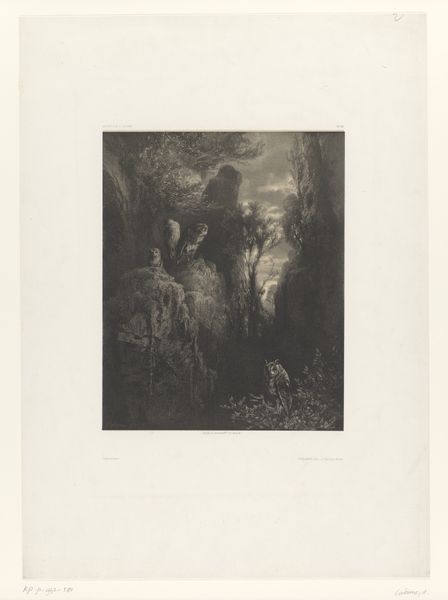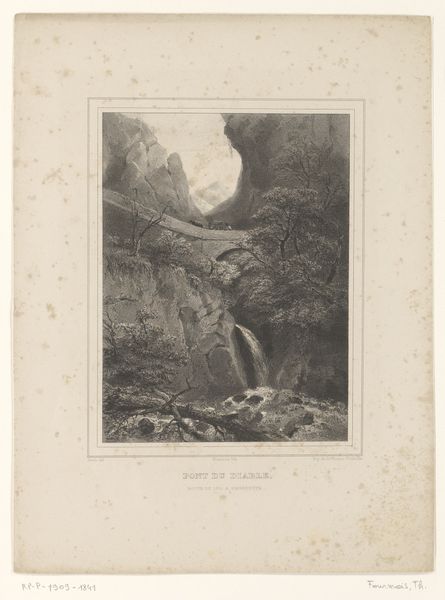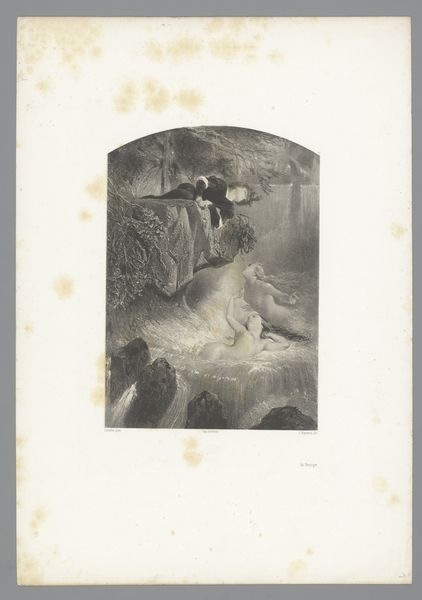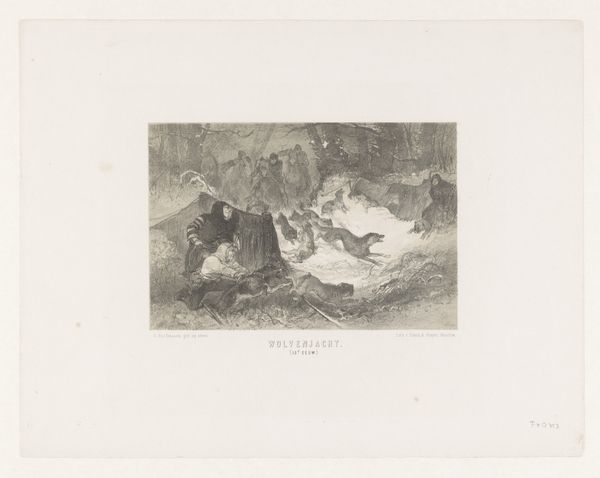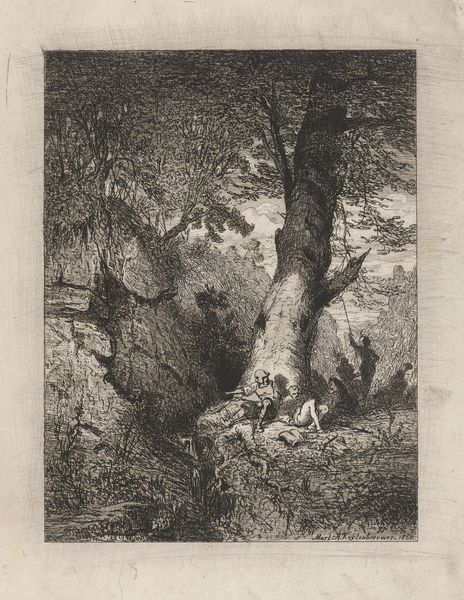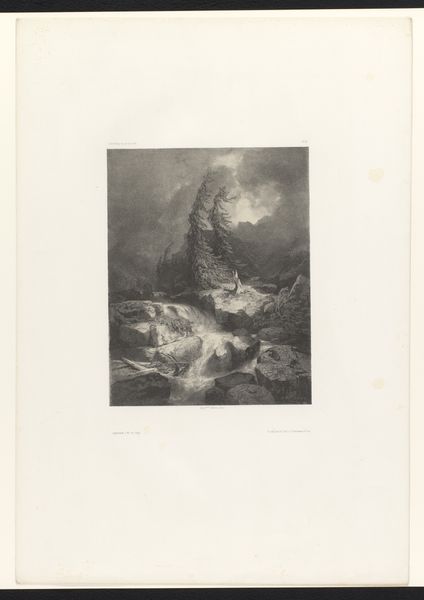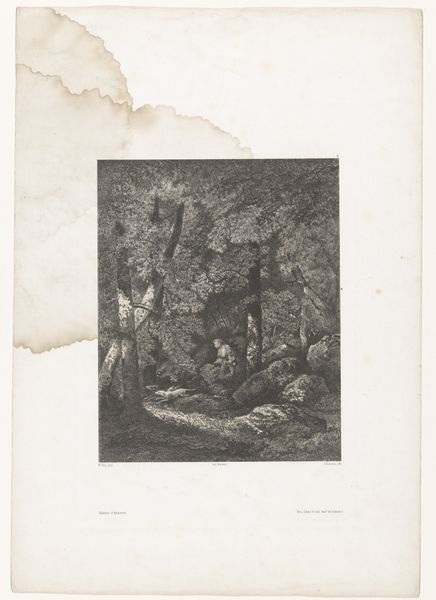
Une Carrière à plâtre près de Lagny (département de Seine-et-Marne); from Magasin Pittoresque 1848 - 1864
0:00
0:00
drawing, lithograph, print, etching
#
drawing
#
lithograph
# print
#
etching
#
landscape
#
genre-painting
#
realism
Dimensions: Sheet: 11 11/16 × 7 7/16 in. (29.7 × 18.9 cm) Image: 7 15/16 × 5 15/16 in. (20.2 × 15.1 cm)
Copyright: Public Domain
Curator: Let's discuss "Une Carrière à plâtre près de Lagny (département de Seine-et-Marne)," a print by Charles Jacque, created between 1848 and 1864. It combines etching and lithographic techniques. What strikes you first? Editor: Immediately, the deep shadows. There's such stark contrast. The workers appear toiling almost within the bowels of the earth, in the mouth of what could easily be interpreted as a prison or a mine. Curator: It’s a powerful use of chiaroscuro. Jacque masterfully manipulates light to emphasize the laborers in their workspace. Notice how the composition is arranged—the figures are carefully placed within the visual frame of the quarry. They appear at fixed stations and along implied lines of labor, like automatons in the cavern. Editor: Absolutely. It speaks to the gruelling nature of manual labor during this period. One wonders about the impact on their bodies. Look how diminutive those human figures in the distance seem to become—practically swallowed by the immensity of this quarry! Are they paid fairly for such exhausting labor? What options were realistically available to them in post-revolution France? Curator: Well, consider how genre scenes found favor among the rising bourgeoisie—Jacque was capitalizing on a demand to depict working-class subjects as anecdotal diversions. Look how deliberately Jacque uses crosshatching in areas like the ceilings to draw the viewer into the quarry’s architecture. Editor: I agree that the structural and tonal nuances construct the drama here. But there's something deeply unsettling in how the figures have all been subjugated by a capitalist landscape of extraction. How does our era’s pursuit of ecological sustainability interact with artworks from such a historical context? I think this is why art must be socially accountable and open to a global intersectional interpretation. Curator: A lot to ponder. I was too captivated by the lines and spatial arrangement. Editor: And I was immediately caught up in the humanity and implications of the depicted industry. It really illuminates our differing interpretations!
Comments
No comments
Be the first to comment and join the conversation on the ultimate creative platform.
